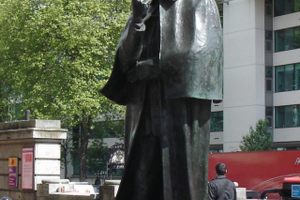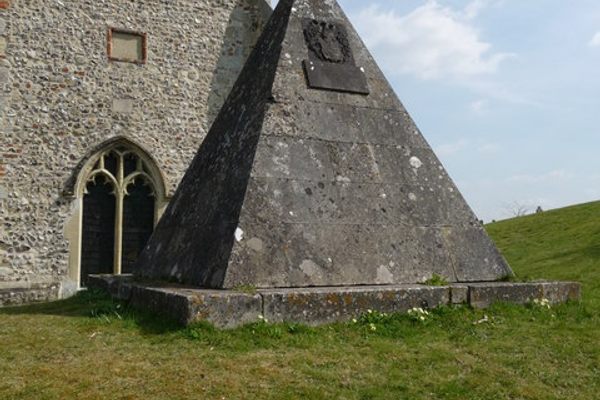About
In 1782, Customs & Excise Officer and soon-to-be-mayor of St. Ives John Knill built a vainglorious mausoleum so the local townsfolk would remember him. Upon his death in London in 1811, his will instructed that every five years, on July 25, 10 young girls, two widows, a local minister, the mayor of St. Ives, a violinist, and a tax man should engage in dancing, singing, and music around his 50-foot-tall, sharp-sided, triangular granite pyramid. And so an unusual local ritual began.
To cover the cost of each celebration, Knill left £25 for each celebration to be spent thus:
£10 for a dinner for the Trustees, including the Mayor, Vicar, and Customs Officer of the time, and two guests each. This takes place at the George and Dragon Inn, St. Ives.
£5 to 10 little girls who have to be the daughters of either fishermen, tinners, or seamen.
£1 to the violinist.
£2 to the two widows.
£1 for white ribbon for breast knots. That's one to research.
£1 to be set aside for a vellum book for the Clerk to the Trustees to enter minutes of the proceedings.
£5 to the man and wife, widower, or widow who shall raise the greatest family of legitimate children who have reached the age of 10 years.
While this carried a certain largesse in the 19th century, today the payments are more symbolic, as is the continuation of the tradition.
Ceremony day begins at 10:30 a.m. inside St. Ives Guildhall, where the Mayor, Vicar, and Customs Officer, each of whom carry an individual key, open the triple-locked chest containing the monies—willed by Knill—for the festivities, and distribute appropriate sums to the participants. After a few words of explanation, the procession, made up of the three Trustees, the Master of Ceremonies, the violinist, two widows, and the 10 little girls, makes its way around the town’s streets, then up Worvas Hill to the steeple. In years past they would have walked, but now they parade in vehicles and are dropped at the bottom of the hill, where they begin the climb for the midday ceremony.
Upon reaching the steeple the procession breaks. The young girls hold hands and dance joyously around the steeple in time with the violinist’s traditional Cornish tunes, while the two widows choose their own dancing partners. After 15 minutes frivolities cease and onlookers, participants by choice or otherwise, are required to sing the 100th psalm before the ceremony comes to a photogenic end.
Outside of the festivities—which occur, again, only once every five years—the pyramid is worth a visit for its spectacular views of Carbis Bay alone. (Alas, Knill himself is not buried in it.) Below the inscription Resurgam ("I shall rise again!"), the steeple carries a painted coat of arms. Nil Desperandum is said to mean,"Do not despair, trust in God,” and local townsfolk who visit may ask any visitor to dance around the steeple three times for their own good fortune. Whether this is true or just for locals’ amusement is yet to be confirmed.
The next ceremony will be in 2021.
Related Tags
Know Before You Go
The walk up to the steeple is a little over a mile and steep in places but is fine for those who are reasonably fit. Should you suffer from pollen allergies, take care as the road is seasonally lined with beautiful foliage.
Published
August 13, 2020




























